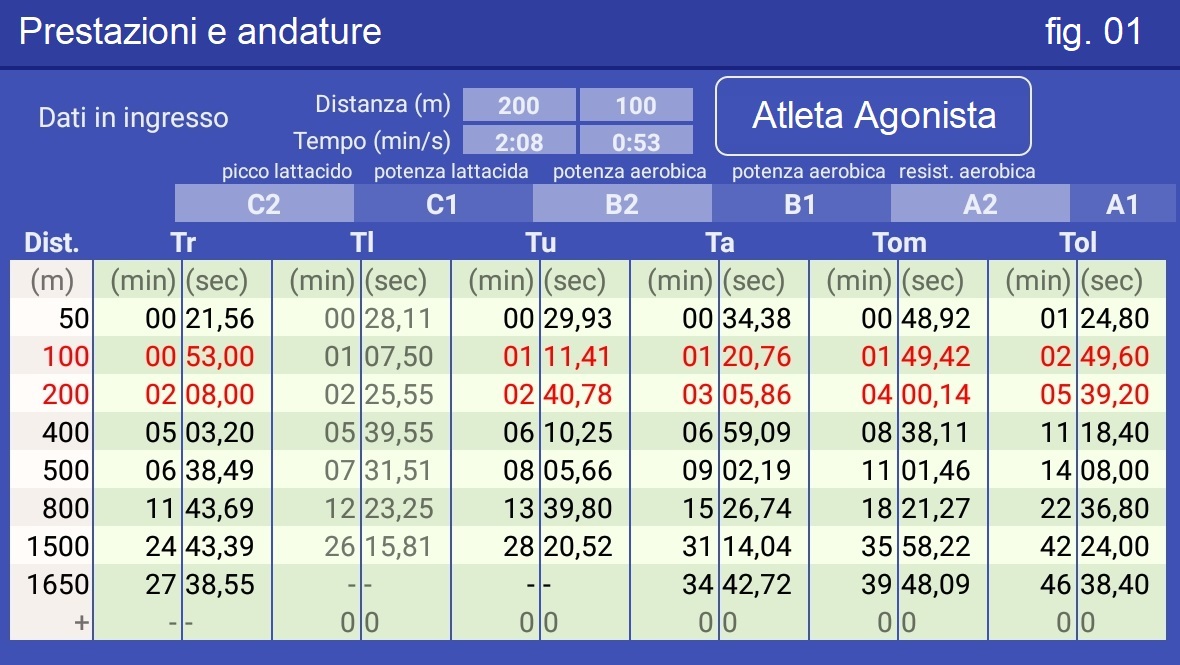
To obtain the training pace over different swimming distances, we must start from the swimming performance, obtained over different distances in the same swimming style, it is possible to calculate the best performance of an athlete on any other distance of the same style both in absolute terms (data entry = personal record on the two distances), and the terms relating to the current condition (entry data = times swum in a recent condition).
It is important that the data entered are times obtained in tanks of the same length, thus returning times obtainable at other distances in tanks of the same length.
Example by entering the race times of the pre-competitive athlete with:
Distance 1 (MT) : 100 MT - Time: 53"
Distance 2: (MT) : 200 MT - Time: 2:08
Let's solve the differential equation which in swimming calculates the decrease in average speed as the race distance increases (see fig.01)

The mathematical model returns in the first column the performances obtainable on all the other distances of the races proposed in the first column that of the distances.
The model is valid for both female swimmers and male swimmers regardless of age, but starting from 12 - 13 years onwards.
Fig.01 shows us the paces to keep in training on the different possible distances chosen as the basis of the set of spaced repetitions, to condition the energy systems in a differentiated and specific way.
Read more … Swimming competitive training paces Calculation times table
Page 4 of 16
We have 27 guests and no members online